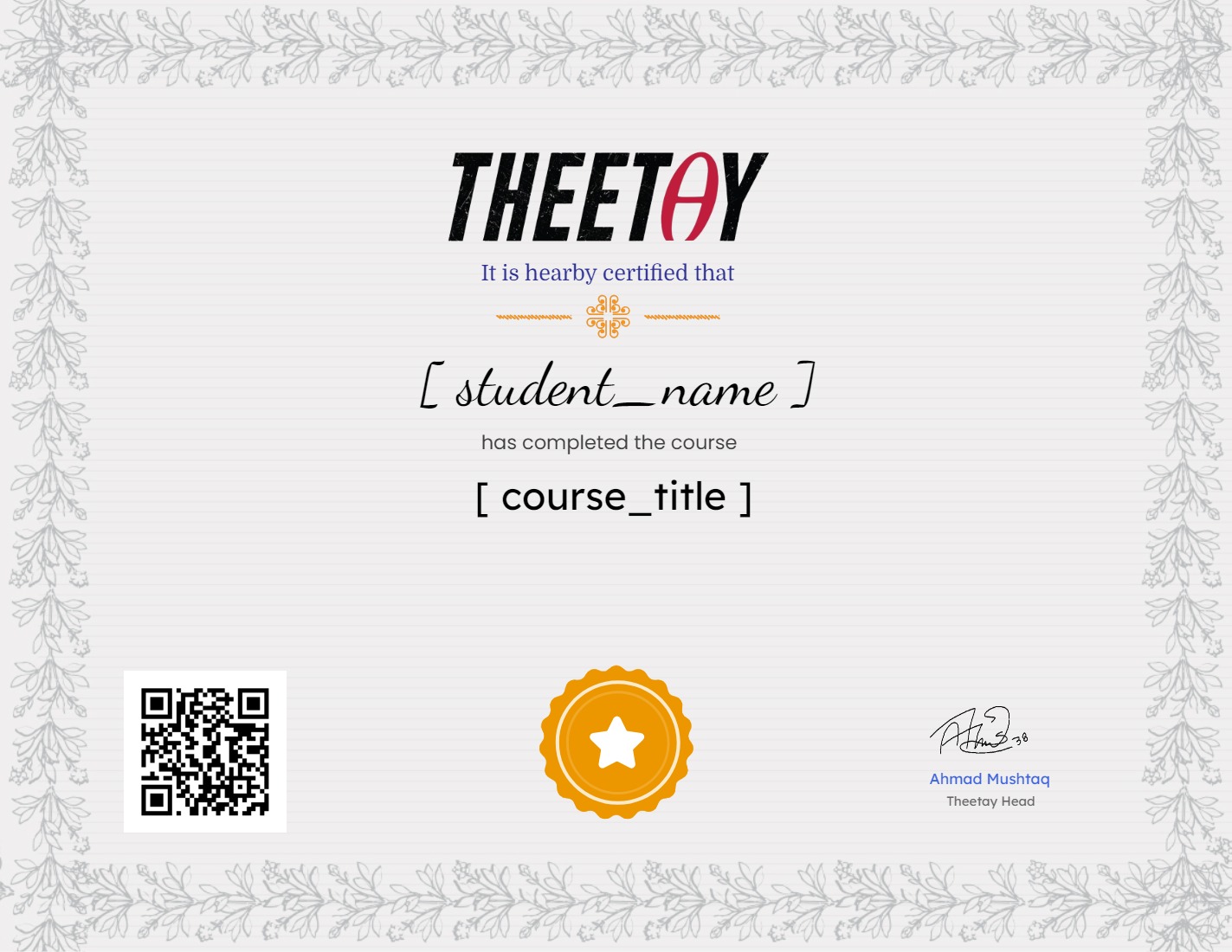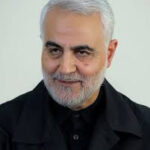Applied Control Systems 3: UAV drone (3D Dynamics & control)

About Course
Learn How to Model and Control a UAV Drone: Applied Control Systems 3
This free course from Udemy teaches you how to model and control a UAV drone. Learn about 3D dynamics, model predictive control, feedback linearization, and more. This course covers topics like:
- Deriving the equations of motion using 3D Dynamics principles
- Describing UAV quadcopter drone position and orientation in 3D space using rotation and transfer matrices
- Understanding Newton-Euler 6 Degree of Freedom equations of motion
- Using the Runge-Kutta integrator
- Learning about propeller dynamics
By the end of this course, you’ll be able to understand the Python simulator code. This knowledge can give you a competitive edge in the engineering job market. Start your journey to becoming a drone expert today!
This course is completely free and available on Theetay, a website that offers a wide selection of free courses from top platforms like Udemy, Udacity, Coursera, MasterClass, NearPeer, and more. Learn about UAV drone control, 3D dynamics, model predictive control, feedback linearization, rotation and transfer matrices, Newton-Euler equations, Runge-Kutta integration, and propeller dynamics.
What Will You Learn?
- mathematical modelling of a UAV quadcopter drone
- obtaining kinematic equations: Rotation & Transfer matrices
- obtaining Newton-Euler 6 DOF dynamic equations of motion with rotating frames
- going from equations of motion to a UAV specific state-space equations
- understanding the gyroscopic effect & applying it to the UAV model
- understanding the Runge-Kutta integrator and applying it to the UAV model
- mastering & applying Model Predictive Control algorithm to the UAV
- mastering & applying a feedback linearization controller to the UAV
- combining Model Predictive Control and feedback linearization in one global controller
- simulating the drone's trajectory tracking in Python using the MPC and feedback linearization controller
Course Content
Drone architecture from Control Systems point of view
-
Introduction + General recap
04:11 -
UAV configuration + inertial VS body frame
06:09 -
Inputs and outputs of a 6 Degree of Freedom UAV drone
03:31 -
Propeller rotation directions 1
02:06 -
Propeller rotation directions 2 – Helicopter example
03:26 -
1st control action – Thrust
03:51 -
2nd control action – Roll
02:40 -
3rd control action – Pitch (exercise)
01:11 -
3rd control action – Pitch (solution) + 4th control action – Yaw (exercise)
02:15 -
4th control action – Yaw (solution)
01:33 -
Rotation vector direction
03:59 -
Global view of the drone’s control architecture
03:32 -
Follow up!
01:04 -
Course Material Download Link
00:00
Fundamental kinematics & dynamics equations for a 6 DOF system (Newton – Euler)
-
Kinematics VS Dynamics
03:48 -
Measuring the UAV’s position (exercise)
02:31 -
Measuring the UAV’s position (solution)
03:55 -
Intro to describing attitudes 1 (exercise)
03:36 -
Intro to describing attitudes 2 (solution + new exercise)
02:27 -
2D rotation matrix formulation (solution + new exercise)
03:45 -
From 2D to 3D rotations (solution + new exercise)
02:25 -
3D rotation matrix formulation about the Z axis 1 (solution)
01:47 -
3D rotation matrix formulation about the Z axis 2 (solution)
02:02 -
Projecting from 3D to 2D (exercise)
03:12 -
Projecting from 3D to 2D (exercise)
03:12 -
Projecting from 3D to 2D (exercise)
03:12 -
Projecting from 3D to 2D (solution) + constructing Rx and Ry matrices (exercise)
03:45 -
Constructing Ry matrix (solution)
04:16 -
Constructing Rx matrix (solution)
02:39 -
Orthonormal matrices (exercise)
02:14 -
Orthonormal matrices (solution)
01:07 -
3D rotation sequence 1 (exercise)
02:43 -
3D rotation sequence 2 (solution)
08:30 -
3D rotation sequence – example (exercise)
12:36 -
3D rotation sequence – example (solution)
05:28 -
Intro to Euler angles (rotation about moving body frames)
01:20 -
Intuition on different conventions
02:37 -
Fixed VS Moving body frame rotations 1 (exercise)
01:00 -
Fixed VS Moving body frame rotations 2 (solution + new exercise)
03:30 -
Fixed VS Moving body frame rotations 3 (solution)
07:42 -
Rotation matrix conventions – Intro
07:00 -
Rotation matrix conventions – Intro
07:00 -
Rotation matrix conventions – Intro
07:00 -
Rotation matrix conventions – R_XYZ matrix product
09:16 -
Rotation matrix conventions – R_ZYX matrix product
06:36 -
Rotation matrix conventions – R_ZYX matrix product
06:36 -
Rotation matrix conventions – R_XYX matrix product
04:44 -
Rotation matrix conventions – R_XYZ vs R_ZYX example
14:22 -
Rotation matrix conventions – R_XYZ vs R_XYX example
14:46 -
Rotation matrix application to the UAV 1
03:32 -
Rotation matrix application to the UAV 2
08:20 -
Why is a special Transfer matrix needed 1
15:09 -
Why is a special Transfer matrix needed 2
08:05 -
Why is a special Transfer matrix needed 3
07:14 -
Transfer matrix derivation 1 (exercise)
07:12 -
Transfer matrix derivation 2 (solution + new exercise)
07:59 -
Mathematical derivation of the Rzyx (moving frame) rotation matrix
03:51 -
Transfer matrix derivation 4 (solution)
04:33 -
Transfer matrix derivation 5
04:28 -
Rotation & Transfer matrix application 1 – Kinematics wrap up
05:14 -
Rotation & Transfer matrix application 2 – Kinematics wrap up
03:02 -
Rotation & Transfer matrix application 2 – Kinematics wrap up
03:02 -
Intro to Dynamics
02:38 -
Dot product 1 + Application
05:08 -
Dot product 2 +Application
04:04 -
Dot product 2 +Application
04:04 -
Dot product 3 + Application (exercise)
02:47 -
Dot product 4 + Application (solution)
03:54 -
Cross Product 1
04:06 -
Cross Product 2 (Exercise)
04:53 -
Cross Product 3 (Solution)
03:21 -
Cross Product Application 1
07:19 -
Cross Product Application 2 (exercise)
02:25 -
Cross Product Application 2 (Solution)
03:44 -
Mass moments of inertia & inertia tensor 1
05:18 -
Mass moments of inertia & inertia tensor 2 (exercise)
04:36 -
Mass moments of inertia & inertia tensor 3 (solution)
08:35 -
Mathematical formulas of mass moments of inertia
07:44 -
Mathematical formulas of products of inertia
03:09 -
Principal axis
03:33 -
Dynamics_ Translational Motion (Inertial Frame)
08:48 -
Dynamics_ Translational Motion (Body Frame) 1
09:11 -
Dynamics_ Translational Motion (Body Frame) 2
09:14 -
Dynamics_ Translational Motion (Body Frame) 3
07:31 -
Angular momentum VS angular velocity 1
07:39 -
Angular momentum VS angular velocity 2
03:30 -
Angular momentum VS angular velocity 2
03:30 -
Dynamics_ Rotational Motion (Inertial frame)
10:40 -
Dynamics_ Rotational Motion (Body frame) 1
09:02 -
Dynamics_ Rotational Motion (Body frame) 2
03:28 -
Autonomous vehicle lateral acceleration through new lenses
20:03 -
Dynamics_ Rotational Motion (Body frame) – alternative form (exercise)
03:53 -
Dynamics_ Rotational Motion (Body frame) – alternative form (solution)
04:46
Specific UAV plant model
-
From 6 DOF Newton-Euler to state-space (exercise)
09:33 -
From 6 DOF Newton-Euler to state-space (solution)
00:58 -
Applying Force of gravity to the UAV (exercise)
11:29 -
Applying Force of gravity to the UAV (solution)
09:02 -
Applying control inputs to the UAV (exercise)
01:25 -
Gyroscopic effect intuition 1 + control inputs (solution)
12:04 -
Gyroscopic effect intuition 2 (exercise)
12:54 -
Gyroscopic effect intuition 3 (solution)
05:04 -
Gyroscopic effect intuition 4
03:14 -
Gyroscopic effect on a UAV intuition 1 (exercise)
04:06 -
Gyroscopic effect on a UAV intuition 2 (solution)
03:24 -
Gyroscopic effect on a UAV intuition 3
06:50 -
Gyroscopic effect on a UAV – Math 1 (exercise)
08:17 -
Gyroscopic effect on a UAV – Math 2 (solution)
05:06 -
Gyroscopic effect on a UAV – Math 3
07:07 -
Gyroscopic effect on a UAV – Math 4
02:46 -
Gyroscopic effect on a UAV – Math 4
02:46 -
Gyroscopic effect on a UAV – Math 4
02:46 -
From 6 DOF Newton-Euler to state-space – Math 1 (exercise)
03:23 -
From 6 DOF Newton-Euler to state-space – Math 2 (solution)
12:46 -
UAV plant model schematics 1 (exercise)
13:02 -
UAV plant model schematics 2 (solution)
09:04 -
Euler state integrator
09:49 -
Runge – Kutta integrator 1
08:17 -
Runge – Kutta integrator 1
08:17 -
Runge – Kutta integrator 2
11:02 -
Runge – Kutta integrator 3
08:49 -
Runge – Kutta integrator 4
08:37 -
Runge – Kutta integrator 5
07:33 -
Runge – Kutta integrator 6
03:03 -
Runge – Kutta integrator 7
02:47 -
Runge – Kutta integrator 8
05:22 -
From control inputs to rotor angular velocities – blade element theory 1
07:15 -
From control inputs to rotor angular velocities – blade element theory 2
09:58 -
From control inputs to rotor angular velocities – blade element theory 3
08:06 -
From control inputs to rotor angular velocities – blade element theory 4
14:06 -
From control inputs to rotor angular velocities – blade element theory 5
10:20 -
From control inputs to rotor angular velocities – blade element theory 5
10:20 -
From control inputs to rotor angular velocities – blade element theory 6
13:29 -
From control inputs to rotor angular velocities – blade element theory 7
10:59 -
From control inputs to rotor angular velocities – blade element theory 8
03:40 -
From control inputs to rotor angular velocities – blade element theory 9
08:58 -
From control inputs to rotor angular velocities – blade element theory 10
09:23 -
From control inputs to rotor angular velocities – blade element theory 11
10:00 -
From control inputs to rotor angular velocities – blade element theory 12
04:35 -
From control inputs to rotor angular velocities – blade element theory 13
08:52
Recap of Applied Control Systems for Engineers 1 – autonomous vehicle
-
Detailed recap 1_ car & bicycle lateral equations of motion
03:03 -
Detailed recap 2_ LTI state – space equations
03:06 -
Detailed recap 3_ continuous VS discrete LTI
03:23 -
Detailed recap 4_ system input calculation using Model Predictive Control
05:10
The UAV’s global control architecture
-
The global control architecture scheme – Intro
05:53 -
The elements of the sequential_cascaded controller
03:17 -
Different tasks of each sub-controller
05:23 -
The Planner
08:41 -
Stronger VS weaker dynamics 1
04:33 -
Stronger VS weaker dynamics 2
12:42 -
Reference trajectory equations in the planner
13:22 -
The affect of the control inputs on future states
10:07
The MPC attitude controller
-
Review of the global control structure
03:12 -
Review of the state space equations of the autonomous vehicle
08:06 -
The UAV’s dynamics and kinematics equations revisited
02:13 -
Zero angle roll and pitch assumption 1
10:52 -
Zero angle roll and pitch assumption 2
06:20 -
Putting the state space equations in the Linear format 1
03:31 -
Putting the state space equations in the Linear format 2
04:20 -
Putting the state space equations in the Linear format 3
04:36 -
Putting the state space equations in the Linear format 4
10:16 -
Linear Parameter Varying form 1
10:18 -
Linear Parameter Varying form 2
04:34 -
Review of the steps from the equations of motion to the plant
04:56 -
The dimensions of the state space equation matrices
04:30 -
Future state prediction formula 1
04:45 -
Future state prediction formula 2
07:39 -
Future state prediction formula 3
14:55 -
Cost function 1
11:46 -
Cost function 2
07:17 -
Cost function 3
10:12 -
Cost function 4
07:41 -
Cost function 5
03:24 -
Cost function 6
03:42 -
Cost function 7
06:25 -
Cost function 8
03:53 -
Cost function 9
05:29 -
Cost function 10
05:35 -
Cost function 11
08:43
Feedback Linearization Controller
-
Equations of motion for position control (inertial frame) – exercise
07:22 -
Equations of motion for position control (inertial frame) – solution
12:45 -
General feedback control architecture
04:05 -
Feedback Linearization Controller schematics – Part 1
05:51 -
Differential Equations – intro
08:56 -
Differential Equations & the control law
04:52 -
Solving differential equations – real roots 1
12:15 -
Solving differential equations – real roots 2
10:07 -
Solving differential equations – real roots 3
06:27 -
Solving differential equations – complex roots 1
09:32 -
Solving differential equations – complex roots 2
09:08 -
Solving differential equations – complex roots 3
08:53 -
Solving differential equations – complex roots 4
04:53 -
Using the exponent for controlling a system – exercise
08:45 -
Using the exponent for controlling a system – solution
11:16 -
Poles & Laplace domain
08:18 -
From poles to differential equation constants – exercise
05:36 -
From poles to differential equation constants – solution
05:16 -
From differential equations to state-space representation
05:23 -
Eigenvalues in control engineering & Determinants
17:28 -
Computing eigenvectors
14:51 -
Laplace VS Fourier frequency domain
06:42 -
Moving poles
12:54 -
Feedback Linearization Controller schematics – Part 2
03:55 -
Simulation results with real & complex poles 1
08:08 -
Simulation results with real & complex poles 2
15:47 -
Simulation results with real & complex poles 3
15:18 -
Feedback Linearization Controller schematics – Part 3
16:08 -
Final Stretch – computing the final control inputs – Part 1
11:51 -
Final Stretch – computing the final control inputs – Part 2
14:49
The simulation code explanation
-
Intro to (Linux & macOS Terminal) & (Windows Command Prompt)
12:54 -
MUST HAVE Matplotlib 3
01:31 -
Python installation instructions – Ubuntu
06:45 -
Python installation instructions – Windows 10
06:34 -
Python installation instructions – macOS
08:13 -
Simulation analysis & code explanation 1
09:33 -
Simulation analysis & code explanation 2
06:42 -
Simulation analysis & code explanation 3
11:12 -
Simulation analysis & code explanation 4
09:40 -
Simulation analysis & code explanation 5
07:18 -
Simulation analysis & code explanation 6
10:51 -
Simulation analysis & code explanation 7
05:49 -
Simulation analysis & code explanation 8
11:10 -
Simulation analysis & code explanation 9
07:29 -
Simulation analysis & code explanation 10
11:21 -
Simulation analysis & code explanation 11
07:53 -
Simulation analysis & code explanation 12
18:31 -
Simulation analysis & code explanation 13
02:25 -
Simulation analysis & code explanation 14
07:44 -
Simulation analysis & code explanation 15
16:25 -
Basic intro to Python animations tools
12:12 -
Thank You!
00:45
Earn a certificate
Add this certificate to your resume to demonstrate your skills & increase your chances of getting noticed.



